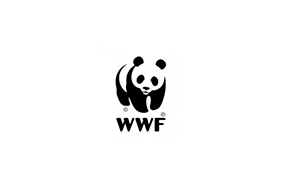Mid-Mississippi Delta River Region Potentially a “Next California” of Fruit and Vegetable Production
With climate change expected to disrupt US food system, report identifies opportunities and hurdles of shifting production east
Published 03-02-20
Submitted by World Wildlife Fund
World Wildlife Fund (WWF) released a new report, The Next California, Phase 1: Investigating Potential in the Mid-Mississippi Delta River Region, exploring the viability of shifting some fruit and vegetable production to an area of the U.S. currently dominated by row crops. The report finds that while California will continue to be a key agricultural state, the mid-Mississippi Delta River region is well-positioned to supplement fruit and vegetable production, contributing to a more distributed and climate-resilient food system.
“The U.S. currently produces more than a third of our vegetables and two-thirds of our fruits and nuts in a single state: California, a place where climate change impacts are already evident,” said Jason Clay, senior vice president of markets at WWF. “A hotter and drier California, with more extreme weather events, is bad news for farmers, but also American consumers and food companies. We need a plan to mitigate risk and take some pressure off the state and its environment. The Delta region could potentially be one of many ‘next Californias’ of the future.”
The report identifies several advantages to selecting the Delta region as a pilot for more intensive fruit and vegetable production. These include a long history of farming, the low cost of land and labor, fertile soils, abundant rain and surface water, and more. There are also economic benefits to be had; widespread poverty and unemployment, along with concerns of ongoing international trade issues and rising tariffs for commodity crops have created an environment receptive to change and diversification. There are also strong land grant universities and trusted local organizations able to provide support and guidance to farmers.
While there are many opportunities, the report also analyzes the significant hurdles that must be overcome for viability at scale. Labor is one of the top concerns. With a shortage of trained labor and very few migrant workers in the region, either more visas must be granted, or more local workers trained to handle specialty crops. Automation and technology, including robots capable of handling delicate produce, could also help address the labor shortage. Other challenges include humidity, pests, pesticides, and a lack of infrastructure needed to process, package, and ship specialty produce.
“Despite the challenges of growing specialty produce, many of the farmers are intrigued by the opportunity and open to change, provided they have the right level of support and aren’t doing it alone,” said Julia Kurnik, director of innovation startups at WWF’s Markets Institute. “There are still questions to be answered, but our research thus far shows potential toward an environmentally and financially sustainable system. Within the next few decades the Delta region could supply a significant portion of the country’s fruits and vegetables.”
The report outlines priorities for Phase II of the Next California project, including additional research and fact-finding, relationship building, fostering market demand, and working with local universities to design a pilot project. Phase II will culminate in a business plan and roadmap, laying the groundwork for local partners to implement next steps.
“Every country has a California in its food system – a place we’ve relied on for generations to feed millions of people – and none of them are anticipating the impacts of climate change,” said Clay. “The lessons learned from this report should be applied globally, starting a conversation to identify the ‘next Californias’ around the world.”
About World Wildlife Fund
WWF is one of the world’s leading conservation organizations, working in 100 countries for over half a century. With the support of more than 5 million members worldwide, WWF is dedicated to delivering science-based solutions to preserve the diversity and abundance of life on Earth, halt the degradation of the environment and combat climate change. Visit www.worldwildlife.org to learn more and keep up with the latest conservation news by following @WWFNews on Twitter.

World Wildlife Fund
World Wildlife Fund
WWF is one of the world’s leading conservation organizations, working in nearly 100 countries for over half a century to help people and nature thrive. With the support of more than 5 million members worldwide, WWF is dedicated to delivering science-based solutions to preserve the diversity and abundance of life on Earth, halt the degradation of the environment and combat the climate crisis. Visit http://www.worldwildlife.org to learn more and keep up with the latest conservation news by following @WWFNews on Twitter and signing up for our newsletter and news alerts here.
More from World Wildlife Fund

